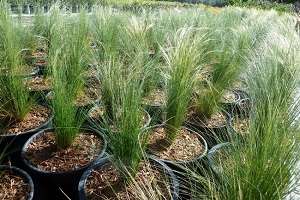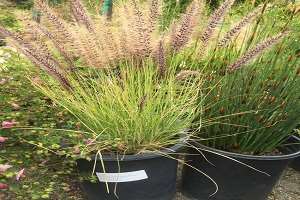Why is the survey important?
The information volunteers gather is vital to PlantRight for three main purposes:
1. Tracking the sale of invasive plants currently on the plant list, and retiring those that have been largely phased out of retail.

The first PlantRight invasive plant list was developed using the California Invasive Plant Council (Cal-IPC) Inventory as a starting point and included 19 plants, focusing on the highest priority invasive plants still sold in garden centers.
To keep the list relevant, as plants from the original list are no longer sold, they are “retired.” To retire a plant, it must be found at less than 1% of nurseries surveyed for 3 years in a row. This doesn't mean that they are gone from our landscapes. Plants like Scotch broom (Cystisus scoparius) and arundo (Arundo donax) have already invaded wildlands in California, and there's still much work to be done to control their spread. Since the invasive plant list was first published in 2006, 15 plants have been retired, which is excellent progress. You can help with these retired plants by removing them if they are on your property or volunteering with groups that remove invasive plants.
There are 7 plants currently on PlantRight's list of invasive plants. The 2016 survey results for these 7 plants can be found in the Fact Sheet and Full Report. Four of these plants were part of the original list of 19: green fountain grass (Pennisetum setaceum),pampas grass (Cortaderia selloana), highway iceplant (Carpobrotus edulis), and big-leaf periwinkle (Vinca major).
Three plants were added in 2014: Mexican feathergrass (Stipa/Nassella tenuissima), yellow flag iris (Iris pseudacorus), and water hyacinth (Eichhornia crassipes).
2. Helping PlantRight determine whether or not to add candidate plants to the plant list.
In late 2012, PlantRight recruited several horticultural experts (all volunteers, from diverse sectors of industry, academia and conservation) to establish their Plant List Committee. These individuals engage in the complex, involved, and time-intensive process of working with PlantRight to decide which surveyed plants to add to the invasive plant list and which non-invasive alternatives to suggest. Each fall, PlantRight solicits input from the Plant List Committee and an extended network of experts to see what plants might be hopping the garden fence and escaping into wildlands

To appear on PlantRight's invasive list, a plant must meet the following criteria:
- When evaluated by PlantRight's Plant Risk Evaluator (PRE), it rates as being “high risk” or is on the Cal-IPC Inventory
- It is found in 3% or more retailers surveyed in the annual Spring Nursery Survey
- Its invasive range is large enough to warrant action, and its inclusion is supported by both the Plant List Committee and Steering Committee
There's one more way PlantRight uses the survey information – helping use their energy and time strategically.
3. Informing industry outreach strategy with information about sales in different regions and store types.

PlantRighthas worked across the nursery supply chain to raise awareness about invasive plant issues and benefits of planting right. In recent years they been recruiting retail nursery partners. These partners commit to sell exclusively non-invasive plants — you won't find any plants on our plant list at a retail nursery partner's store. Knowing who is selling invasive plants and in what regions of the state helps focus their efforts where they will have the greatest impact.
Get an exclusive look at the results of this year's survey (before they go online) by attending the 2017 UC Master Gardener Conference in Long Beach on August 22-25, where PlantRight will be giving a presentation and celebrating the participation of UC Master Gardener volunteers in this effort.
Can't participate in the survey?
You can still help by sharing what you've just read, sharing the Plant List or Mexican feathergrass species spotlight, shopping at PlantRight retail partner locations, and educating your friends and neighbors. You can also participate in their Continuing Education program if you would like to expand your knowledge about invasive garden plants in California. You are welcome to still watch the webinar if you can't participate in the survey. A recording of each webinar will be shared on the PlantRight YouTube channel immediately after it concludes.
Source: ucanr.edu